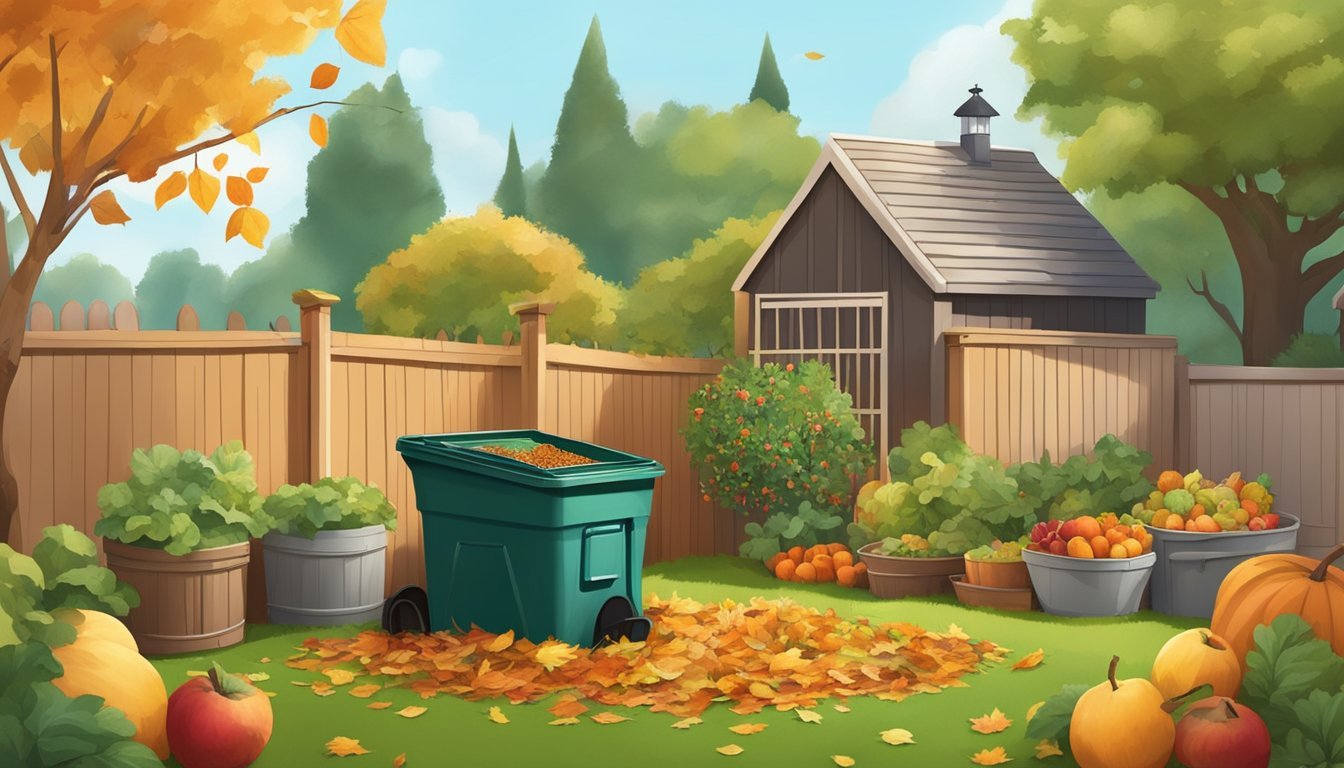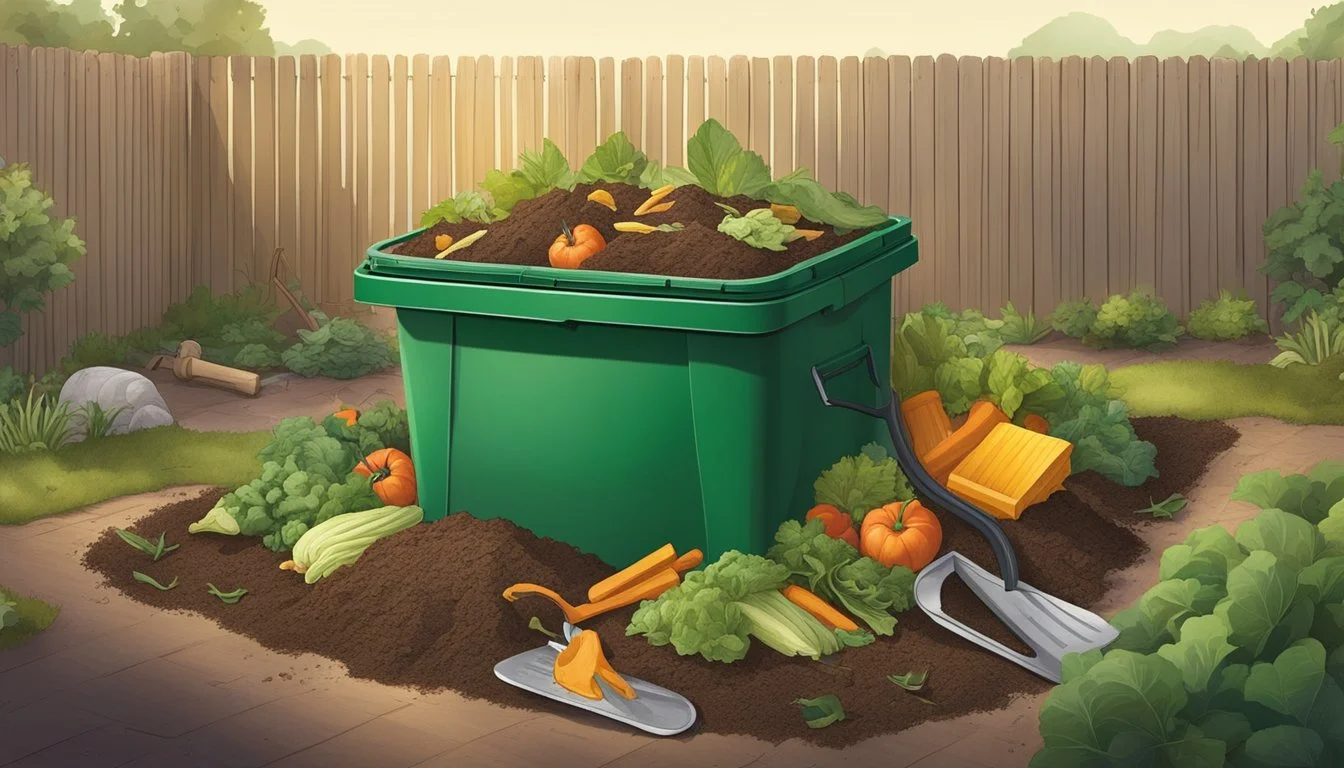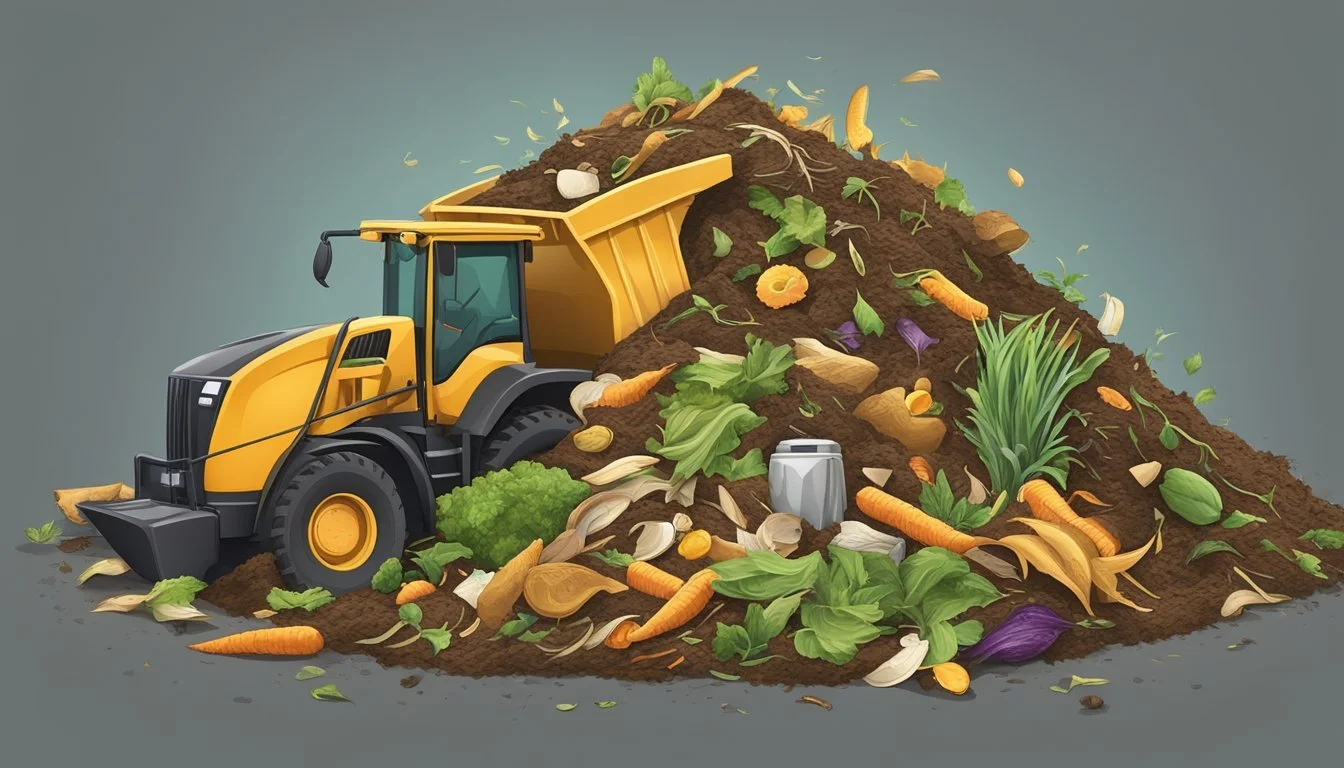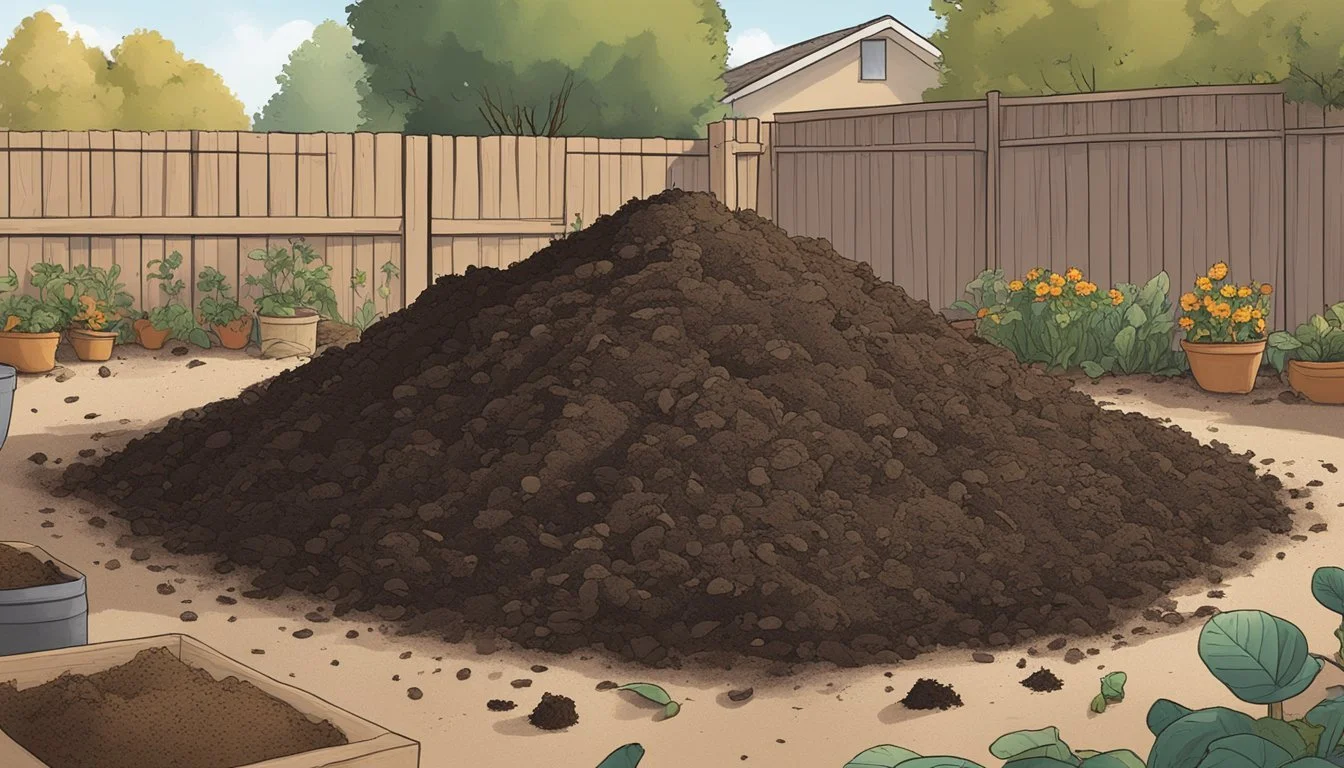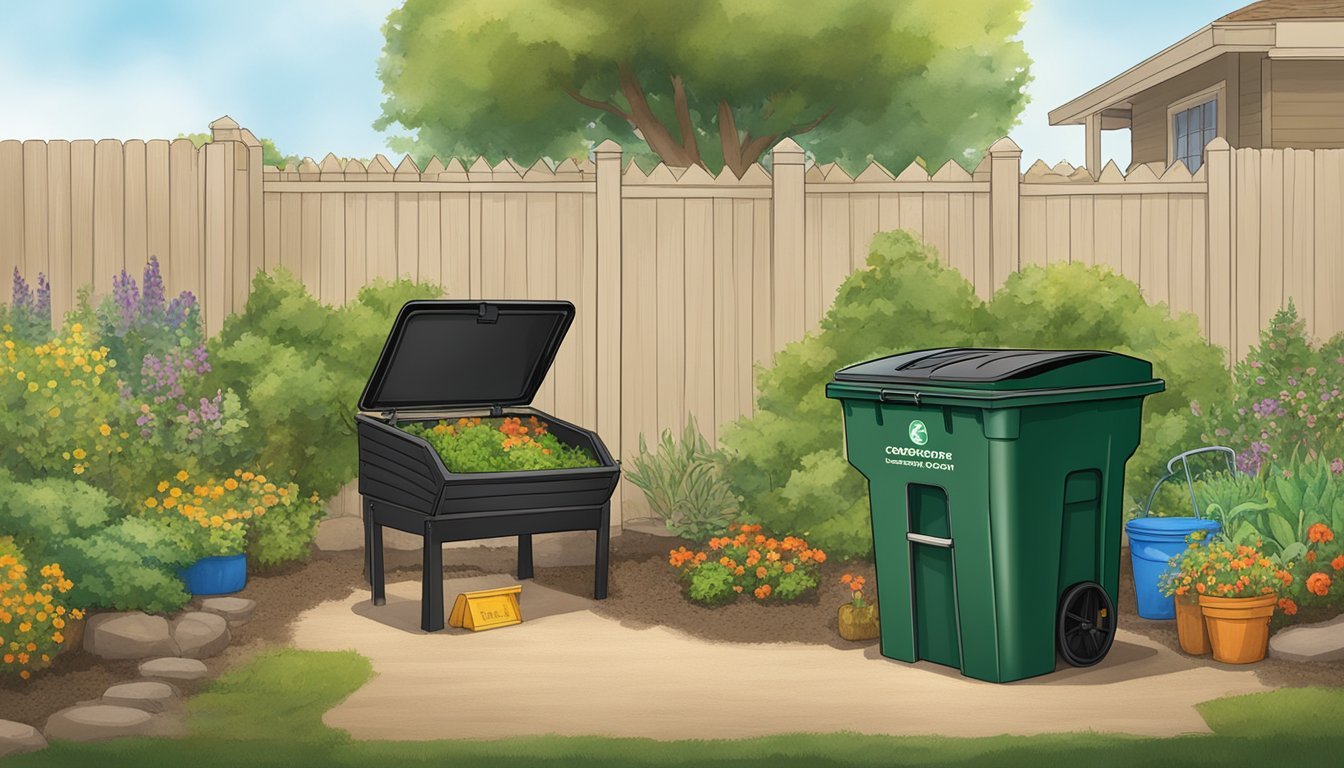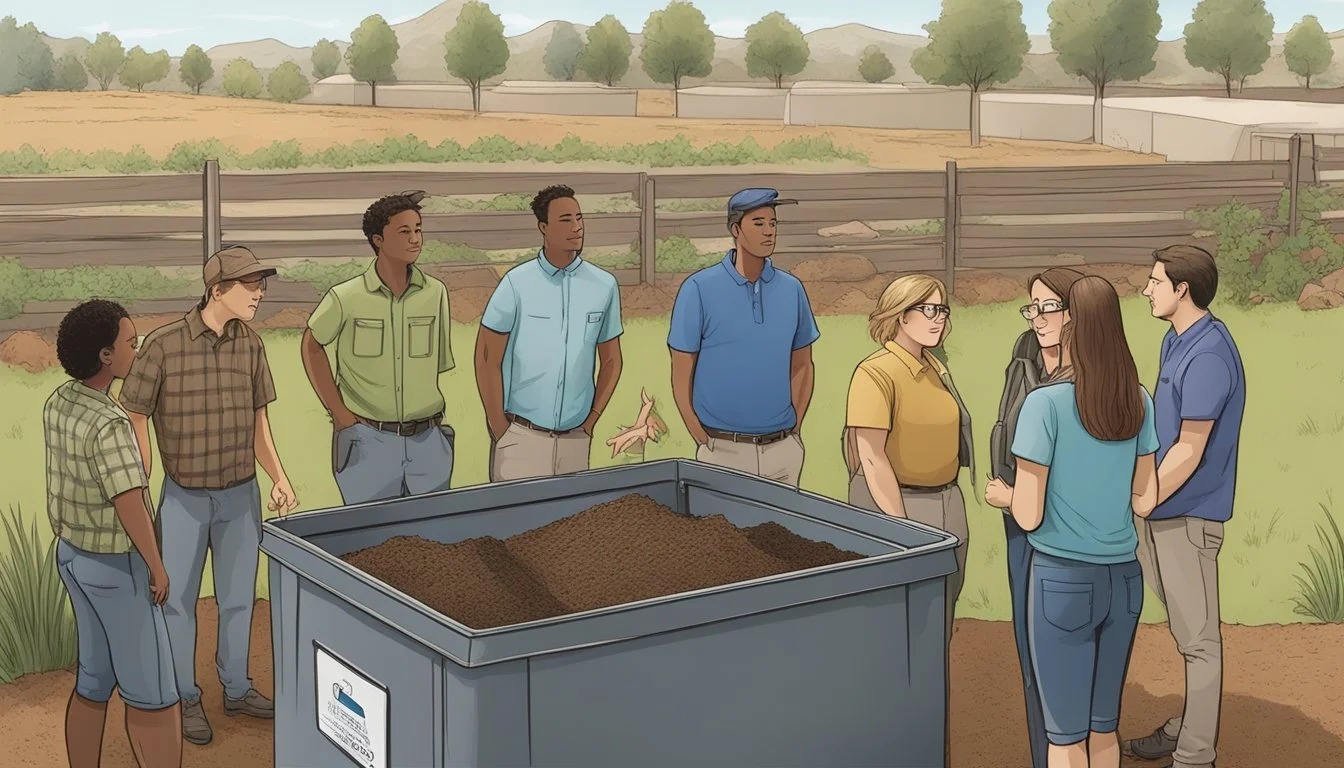Guide to Composting in Clovis, CA
Essential Tips for Sustainable Waste Reduction
Composting has become an essential practice in Clovis, CA, offering both environmental benefits and practical uses for organic waste. Citizens of Clovis demonstrate their environmental consciousness through actively engaging in composting initiatives, utilizing leftovers and yard waste to contribute to a more sustainable community. The local government and service providers support these efforts with guidance and resources to ensure the process is accessible and effective for everyone.
In line with California's new composting laws, residents of Clovis are adapting to methods that integrate food scraps and green waste into their daily waste management routines. The city, through Republic Services, even provides free compost for its residents during annual events, encouraging the utilization of compost in personal gardening projects and landscaping. Moreover, guidelines have been laid out for residents, outlining the simple steps for incorporating both food scraps and yard waste into the green waste bin, creating a closed-loop system that benefits the local ecosystem.
Understanding the balance of nitrogen-rich materials and carbon-rich materials is crucial to successful composting. Residents can easily find a variety of materials to maintain this balance, such as combining green kitchen scraps with dry leaves or shredded newspapers. Clovis empowers its citizens with the knowledge to perform home composting effectively, which not only diverts waste from landfills but also provides a rich amendment for soils, improving the health and productivity of gardens and public green spaces across the city.
The Basics of Composting
Composting is a systematic process that transforms organic material into nutrient-rich soil additive, serving as a cornerstone of sustainable waste management in Clovis.
What Is Composting?
Composting is the biological decomposition of organic waste such as food scraps, yard trimmings, and paper products. When these materials are placed in an appropriate environment, microorganisms break them down into compost, a valuable soil amendment. This process occurs in the presence of air and moisture, turning would-be waste into a resource that can enhance soil health.
Benefits of Composting
The benefits of composting are multifaceted, touching on environmental, social, and economic aspects. By diverting organic waste from landfills, composting reduces emissions of methane, a potent greenhouse gas. This, in turn, contributes to the mitigation of global warming and climate change. Additionally, the use of compost can improve soil structure, promoting water retention and plant growth, which can benefit Clovis's agricultural productivity.
Setting Up Your Composting System
Creating a successful composting system in Clovis, CA, involves careful planning and understanding of the composting essentials. This section will guide you through the initial steps of setting up your backyard composting system: choosing the right location, selecting an appropriate compost bin, and knowing what materials to include or exclude for effective composting.
Choosing the Right Location
The location of your compost bin is paramount. It should be easily accessible, yet away from direct sunlight and strong winds which can dry your compost out. Ensure the spot has good drainage and is not prone to standing water. A flat area in your yard would make a suitable choice, allowing for proper handling and maintenance of the composting bins.
Selecting a Compost Bin
When considering a compost bin, size matters, along with design. Composting bins come in various sizes to accommodate different amounts of waste. For instance, a family of four might opt for a bin that is approximately 3 feet wide and 3 feet tall. Whether choosing a ready-made composting container or building one from scratch, make sure it allows for adequate air circulation and moisture retention, which are critical for the composting process.
What Can and Can't Be Composted
Understanding what to compost is crucial for a healthy compost system. You can include:
Fruit and vegetable scraps (apple cores, carrot peelings)
Coffee grounds and tea bags (filter paper included)
Egg shells and nut shells
Yard waste like leaves and grass clippings
However, not all organic matter is suitable for backyard composting. Do not include:
Meat or dairy products
Fats or oils
Diseased plants
Pet wastes
These items can attract pests or cause unpleasant odors, and may also contain pathogens harmful to plants and humans. Stick to plant-based scraps and yard waste to ensure a functional and odor-free composting experience.
Composting Methods
Composting can be primarily classified into two types based on temperature regulation and the rate of decomposition. Hot composting accelerates the breakdown of organic matter, while cold composting is a slower, more passive process.
Hot Composting
Hot composting, also known as active composting, is a method where the temperature within the compost pile is managed to speed up the decomposition process. A hot compost pile requires a balance of green (nitrogen-rich) and brown (carbon-rich) materials, adequate moisture, and aeration. The ideal temperature range for hot composting is between 135 to 160 degrees Fahrenheit. This high-temperature range is achieved by regularly turning the pile to introduce oxygen, which in turn heats the pile and promotes rapid microbial activity. Individuals should aim to turn the pile once every one to two weeks to maintain proper aeration and temperature.
Materials: Green and brown organic waste
Temperature: 135-160°F
Aeration: Regular turning
Benefits: Faster decomposition
Cold Composting
Cold composting, also referred to as passive composting, involves a less intensive approach. The method relies on the natural breakdown of organic materials over time without the need to monitor temperature or turn the pile for aeration. One simply adds kitchen scraps, yard waste, and other organic materials to a pile and lets nature take its course. The decomposition process in cold compost is slower, often taking anywhere from a year to two years, making it a good option for individuals who prefer a less hands-on approach.
Materials: Organic waste
Temperature: Unregulated, ambient
Aeration: Occasional or none
Benefits: Minimal maintenance
Optimizing the Composting Process
Successful composting relies on balancing essential elements to create a rich, usable organic material. The following methods will ensure the composting process in Clovis, CA, is efficient and effective.
Balancing Green and Brown Materials
For a compost pile to decompose properly, it requires the right mix of green waste (nitrogen-rich materials) and brown materials (carbon-rich materials). Greens include vegetable scraps and grass clippings, while browns consist of dry leaves, straw, and sawdust. A general guideline is to use a ratio of 1 part green to 3 parts brown materials to maintain a balance that fosters decomposition.
Maintaining Proper Moisture and Aeration
Moisture and aeration are crucial for the microorganisms breaking down the pile. The moisture level should be akin to a wrung-out sponge—not too wet, but not dry. This can be achieved by lightly watering dry materials. Aeration is needed to supply oxygen to the pile. Inserting a few perforated PVC pipes vertically into the pile or using a compost turner can enhance air flow.
Turning the Compost
Regular turning of the compost pile is important for aeration and to distribute moisture and heat evenly throughout the pile. Turning should be done every few weeks with a compost fork or shovel. This practice introduces fresh air and helps maintain the balance of carbon and nitrogen, speeding up the decomposition process.
Using Finished Compost
Finished compost, a nutrient-rich amendment, is a garden's best friend, ensuring plants thrive in a nourishing environment. This crucial element not only enriches the soil but can also be used as mulch to promote moisture retention and temperature regulation.
When Is Compost Ready?
One can determine if finished compost is ready for use by its appearance and texture—it should be dark, crumbly, and bear a resemblance to rich soil. The compost should also have a pleasant, earthy smell, devoid of any ammonia-like odor which indicates incompletely decomposed materials. A simple squeeze test can be telling: when grabbed, the compost should hold together lightly but crumble when poked, signifying adequate moisture and decomposition.
How to Use Compost in Your Garden
Incorporating finished compost into a garden is a strategic process. Use the following methodologies:
As Soil Amendment: Before planting, mix the compost into the top 6 to 8 inches of soil. This integrates nutrients directly where the plant roots will grow.
As Mulch: Apply a 2 to 3-inch layer of compost around plants, which helps retain soil moisture and regulate temperature, reducing the frequency of watering.
For Potted Plants: Blend compost with potting soil to enhance the nutrient content for container gardening.
Moreover, when using finished compost, it's important to avoid over-application as excessive amounts can harm plant growth rather than helping it. A balanced approach encourages a thriving garden ecosystem.
Advanced Topics in Composting
Exploring advanced topics in composting caters to enthusiasts ready to enhance their composting practices in Clovis, CA. This section dives into resolving common composting issues, utilizing worms to accelerate the decomposition process, and employing Bokashi composting for handling kitchen waste effectively.
Troubleshooting Common Composting Problems
Composting can sometimes present challenges, such as unpleasant odors, attracting rodents, or slow decomposition. If a compost pile emits a bad smell, it often indicates excess moisture or lack of aeration. Turning the pile more frequently and adding dry, carbon-rich materials can help rectify this. If rodents are an issue, ensure the compost bin is well-sealed and avoid adding meat or dairy products to the pile. Weed seeds, when inadvertently added to compost, can be minimized by avoiding the inclusion of weeds that have gone to seed or by maintaining a higher temperature within the compost pile to kill the seeds.
Composting With Worms (Vermicomposting)
Vermicomposting is the process of using worms, typically red wigglers, to break down organic waste. These worms are efficient decomposers, turning kitchen scraps and yard waste into nutrient-rich compost, called worm castings. For successful vermicomposting:
Maintain the bin at room temperature.
Balance the feed with both green and brown materials.
Avoid overfeeding and keep the bin moisture level like a wrung-out sponge.
Harvest the castings every few months to give the worms fresh material to work on.
Bokashi Composting
In contrast to traditional composting methods, Bokashi composting is an anaerobic process that ferments organic waste in a sealed container using a specific mix of microorganisms. This method is particularly useful for those with limited space. Some key steps include:
Chopping food waste to increase surface area.
Sprinkling Bokashi bran over each layer of waste.
Ensuring the container is airtight.
Draining off liquid frequently to prevent putrefaction.
Bokashi composting efficiently handles materials like cooked foods, cheese, and meats that are normally problematic in traditional composting, and can be integrated into a garden after the initial fermentation process is complete.
Composting Regulations and Support in Clovis, CA
Residents in Clovis, CA, face specific local regulations regarding composting, stemming from state mandates designed to reduce waste and enhance sustainability. Community support structures, including local programs, offer resources to help individuals and businesses comply with these regulations and contribute positively to the city's waste management ecosystem.
Local Regulations on Composting
California legislation, specifically Senate Bill 1383 (SB 1383), has set forth statewide mandates to reduce organic waste in landfills. Clovis residents, as part of this statewide initiative overseen by CalRecycle, are required to actively separate organic materials like food scraps and yard waste from traditional waste streams. This action is a direct effort to minimize the amount of organic waste that ends up in landfill environments.
In Clovis, Recology, the city's chosen waste management partner, has instituted a composting program that aligns with SB 1383. Residents are advised to utilize green waste bins provided by the city for the collection of acceptable organic materials, with an aim to divert a significant percentage of the community's organic waste from landfills by processing it into compost.
Community Support and Resources
The City of Clovis offers community support and resources to encourage and educate residents on the benefits and practices of composting. A noteworthy example of this support is the free compost giveaway to incentivize participation in the city's organic recycling efforts.
Additionally, residents can turn to community gardens, which often serve as hubs for learning about sustainable practices, including composting. These gardens can provide information on how to properly separate and handle compostable materials. They also often partner with the city's recycling program to ensure organic waste is responsibly managed and turned into valuable compost, which can then be used to enrich local soils.
Clovis has demonstrated a strong commitment to sustainability by supporting these initiatives and creating an infrastructure that helps Californians contribute to a greener state, reducing the overall impact on landfills and promoting a more resourceful approach to waste.
Special Events and Programs
Residents of Clovis, CA, can benefit from special programs designed to support and encourage composting in the community.
Compost Giveaway Event
The City of Clovis holds an annual compost giveaway that offers residents an opportunity to obtain free compost for their gardens. Usually scheduled for early March, this event is hosted at 810 Nees Avenue, and typically runs from 7 AM to 1 PM.
Dates: Varies yearly (usually early March)
Location: 810 Nees Avenue
Time: 7 AM to 1 PM
Compost Limit: Up to 3 cubic yards of compost per resident
Requirements: Residents must bring their own containers
Staff assistance is available to help with loading compost into residents' containers. This contributes to Clovis's sustainability efforts by providing nutrients for their gardens and reducing organic waste.
Free Compost Pickup Times
In addition to the giveaway event, the city may offer free compost pickup times for residents on designated days. While this may not be a regular occurrence, it is typically aligned with the compost giveaway event.
Available Hours: Conducted within the same 7 AM to 1 PM timeframe
Availability: While supplies last
Loading Assistance: Provided by event staff
Residents are encouraged to take advantage of these programs to enrich their soil while supporting the environment.

